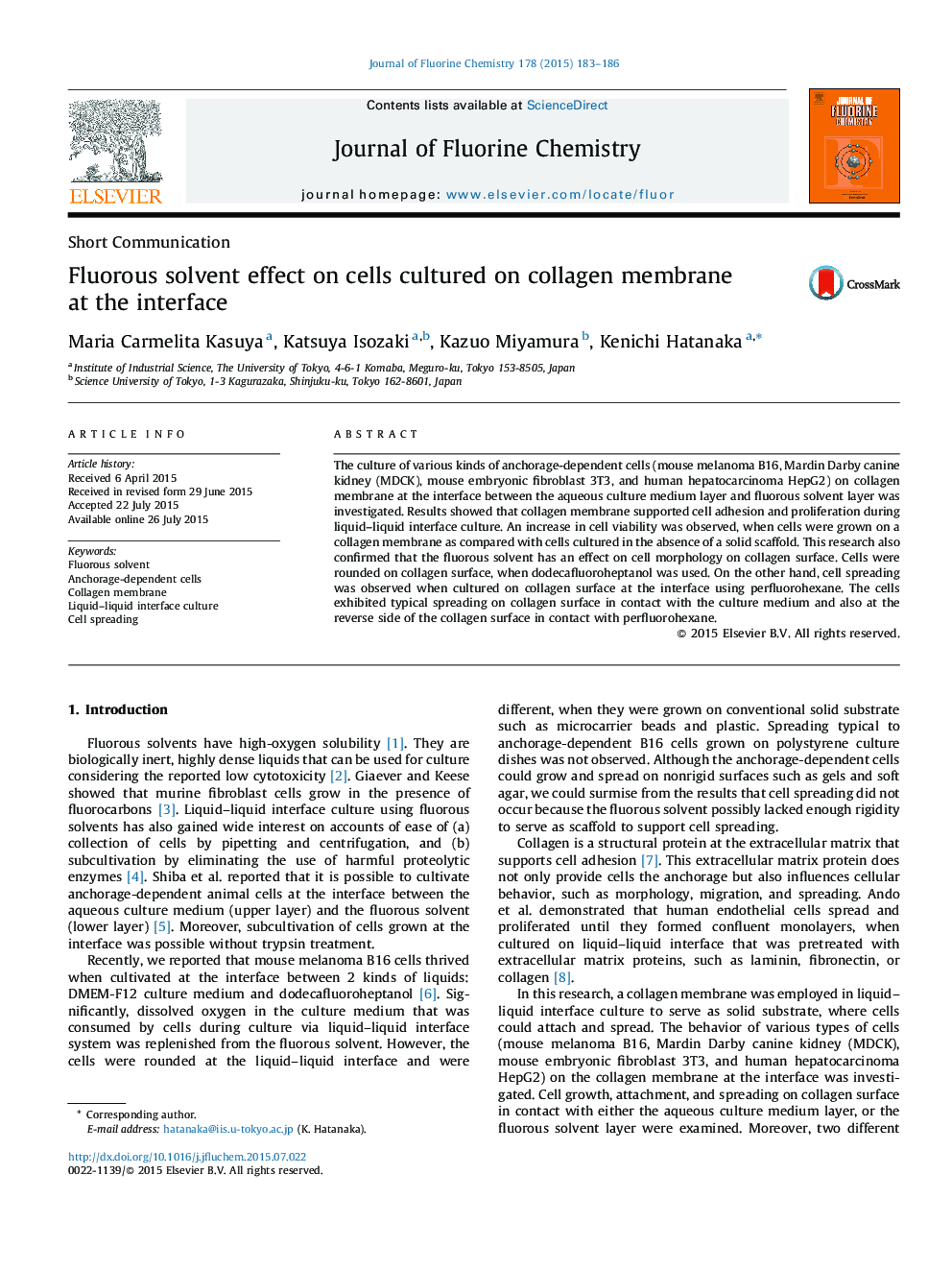| Article ID | Journal | Published Year | Pages | File Type |
|---|---|---|---|---|
| 1313788 | Journal of Fluorine Chemistry | 2015 | 4 Pages |
•Four kinds of anchorage-dependent cells were used in the study and the effect of fluorous solvent on the cells was compared.•The animal cells were cultured on collagen membrane at the interface between the aqueous culture medium and fluorous solvents.•Two kind of fluorous solvents were used and the effect on cell adhesion, spreading, and proliferation was compared.•The cells adhered, spread, and proliferated on collagen membrane at the interface depending on the fluorous solvent used.
The culture of various kinds of anchorage-dependent cells (mouse melanoma B16, Mardin Darby canine kidney (MDCK), mouse embryonic fibroblast 3T3, and human hepatocarcinoma HepG2) on collagen membrane at the interface between the aqueous culture medium layer and fluorous solvent layer was investigated. Results showed that collagen membrane supported cell adhesion and proliferation during liquid–liquid interface culture. An increase in cell viability was observed, when cells were grown on a collagen membrane as compared with cells cultured in the absence of a solid scaffold. This research also confirmed that the fluorous solvent has an effect on cell morphology on collagen surface. Cells were rounded on collagen surface, when dodecafluoroheptanol was used. On the other hand, cell spreading was observed when cultured on collagen surface at the interface using perfluorohexane. The cells exhibited typical spreading on collagen surface in contact with the culture medium and also at the reverse side of the collagen surface in contact with perfluorohexane.
Graphical abstractFigure optionsDownload full-size imageDownload as PowerPoint slide
